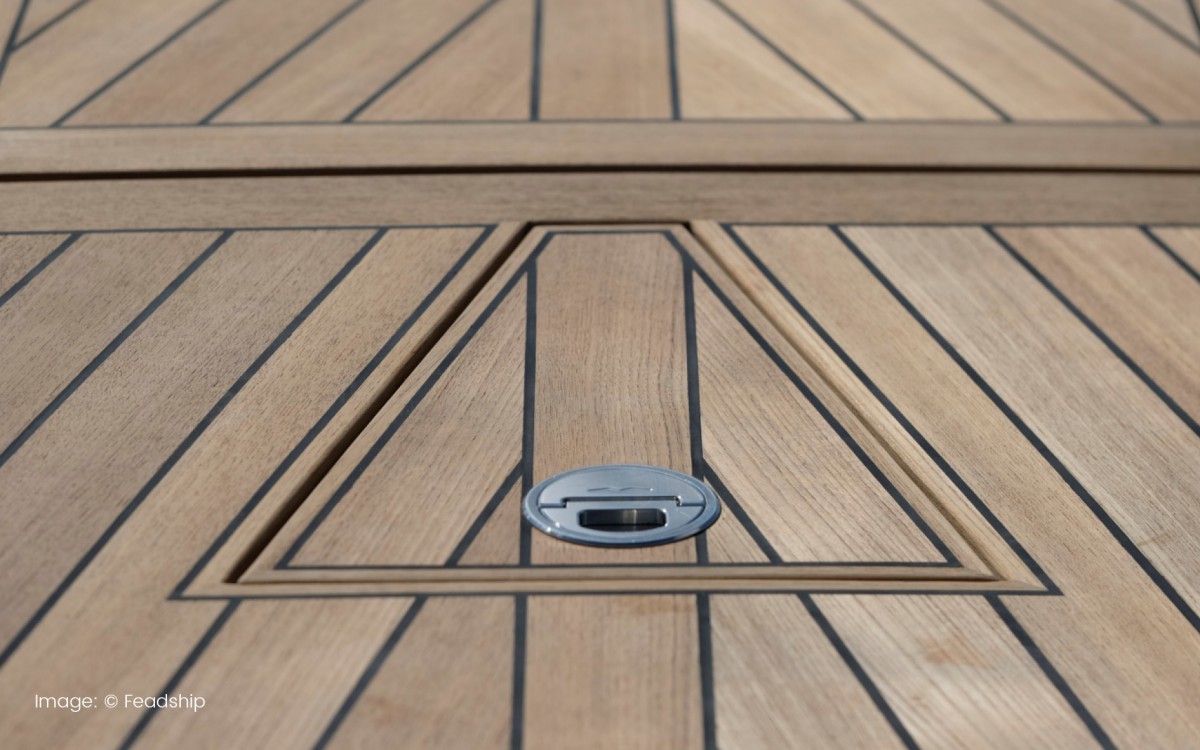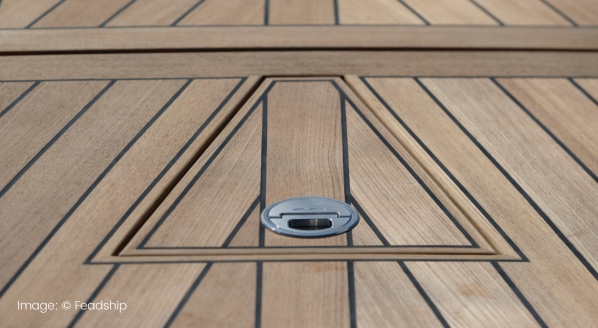The second part of our teak industry report shows how environmentally conscious thinking about alternative decking materials can lead to sustainable innovation…

Teak still rules the waves, but his rule is facing open rebellion. The valuable wood has been synonymous with yachting for decades, but its procurement and use have become serious problems for a variety of reasons. In previous editions we have examined not only why this is important, but also what is being done about it. What we have found is a market on the verge of change, where change typically occurs from the ground up.
At the basis of it all are providers such as Teak Decking Systems, Wolz Nautic and Amorim, who were featured in ours previous editionhave spent over a decade and a half building parallel systems, testing new materials, and stress testing assumptions. Alternatives to the once immobile feature are now live and in action. Plantation teak can be a viable option with proper certification and careful management. Not everywhere and not without limitations, but it's a start. “Green teak,” made from veneer, offers an artisanal solution that mimics the grain and feel of mature trees and produces 90 percent of the yield of much younger trees.
Modified woods like Tesumo, which are pressure-treated, resin-infused and thermally stabilized, are already used in large-scale projects and are the gold standard in durability, repairability and stability. And then there's cork: CO2 negative, fully recyclable, easy to care for and soft underfoot. The comfort is real and tactile. The question is no longer whether it works, but whether people are willing to use it?
This is where the friction lies, in this perceptual gap between what is available and what is accepted. This divide is aesthetic, emotional and often generational. For some, decking still begins and ends with traditional teak. And that also applies to the builders. It's the color, the smell, the symbolism. This is how it feels in your hands when you work with it. And this myth of endless supply still persists despite increasing regulation, reputational risk and pricing pressure – the emotional appeal remains difficult to shake.
The fact is that we are running out of road – the realities of the teak market have changed. Long boards disappear. Five meter long barrels of flawless grain are rare artifacts today. Even three-meter boards are becoming scarce. That means working smarter. Formwork joints, once a niche, are becoming necessary. Shipyards are adapting, shortening planks, fusing seams and adopting methods that would have been discarded five years ago. It's slower and more technical work, but for some it's the only viable way forward.
Composites find their place in high-stress areas where practicality trumps prestige, such as helipads, tender garages and bows. Clients may still want a teak aft in the master suites where they talk, but they're starting to listen.
The sourcing narrative has also changed. Plantations certified by the Forest Stewardship Council are increasing, and new regions are opening in Panama, Costa Rica, Thailand and Indonesia. But certification alone is not enough and companies are making it their mission to use isotope analysis, DNA testing and on-site monitoring as standard measures for those who want to protect themselves and their customers from legal and reputational consequences.
And while plantation teak offers a potential path forward, it is not a one-size-fits-all approach. The quality varies, as does the scale. A 200 square meter semi-custom project? Sure, you can make it work. But a fully custom project longer than 90 meters? It's a far more challenging task, to say the least, unless you're willing to combine materials or reframe expectations. This is the other change that is taking place not only in the materials themselves, but also in how and where they are used. Composites find their place in high-stress areas where practicality trumps prestige, such as helipads, tender garages and bows. Clients may still want a teak aft in the master suites where they talk, but they're starting to listen.
Offerings are expanding, and while the technical aspects are solid, a consistent theme is emerging across all parts of the supply chain: suppliers are still struggling with inertia due to entrenched customer resistance. This is often related to the belief that luxury is synonymous with legacy and that legacy is associated with traditional materials such as teak. Although this myth is slowly fading, it may face major challenges as a new shift emerges from unexpected sources – particularly issues from the (grand)children of captains and owners. At the shipyards, some designers are finding that clients may be more open to new ideas than they thought. Forward-thinking shipyards are rethinking what “quality” means in this changing context. And that brings us to the present moment.
If 80 percent of the impact on a yacht's lifespan is determined at the design stage, then it all depends on the design boards and the negotiating tables. This is where technical feasibility and customer psychology meet and form the crucial meeting point for sustainability and sales. Here the conversation can either expand or contract under the weight of both sides' expectations.
Here we explore what's happening in the shipyards. We talk to those who are dealing with real tasks, budgets and real resistance. How do you present cork to a customer expecting Burmese teak? How do you balance performance and perception? And to what extent are owners willing to do something when doing the right thing still feels like a risk?
As news editor Conor Feasey delved deep into the sensitive topic of teak, he spoke to Feadship, Lürssen and Oceanco to explore their innovative approaches to long-term sustainable teak alternatives. Your answers will be published in three parts and will follow in the coming days.
This article first appeared in The Superyacht Report – Owners in Focus. With our open source policy, it's available to everyone if you follow it linkSo read and download the latest edition and all our previous editions in our library.
NEW: Sign up for SuperyachtNewsWeek!
Receive the latest news, in-depth reports, information and strategic insights every week, directly from Superyacht Group's editors and market analysts.
Stay at the forefront of the superyacht industry with SuperyachtNewsWeek
Click here to become part of the Superyacht Group community and join our mission to make this industry accessible and long-term successful for everyone. We offer access to the superyacht industry's most comprehensive and long-lasting archive of business-critical information, as well as a comprehensive, real-time superyacht fleet database, for just £10 per month because we are an industry with a mission. Register here.
